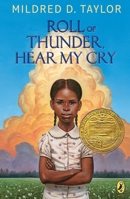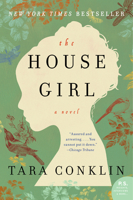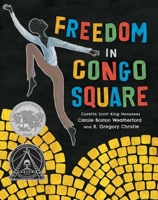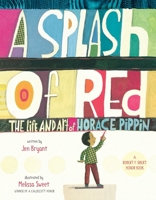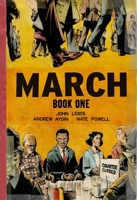Reading Through Black History Month
By Bianca Smith • February 05, 2018
"The American identity has never been a singular one and the voices of poets invariably sing, in addition to their own, the voices of those around them." – Aberjhani, The American Poet Who Went Home Again
While some say there are too many celebration months, they create opportunities to learn about and celebrate a wide variety of events. February is Black History Month, and we're celebrating with stories through history. Many events occurred before we were born (thus, they are history), and these stories, even the fictional ones, give us a window to a time we didn't live.
In Roll of Thunder, Hear My Cry we meet Cassie discovering she's expected to accept old schoolbooks and to walk in the mud because of her skin color. The House Girl follows a modern-day New York lawyer as she discovers a renowned prewar artist whose famous works might have been painted by her slave, Josephine, and learn more about Josephine's life. Children will be entrained by stories of work and fun while learning history.
Freedom in Congo Square by Carole Boston Weatherford
The slaves in 19th century Louisiana were fortunate to have a half-day off to spend in Congo Square. During the week they chop wood, train mules, and do all the work. On Sundays, they set up an open market, sing, dance, and play music. This award-winning children's story shows the life and also the excitement of the slaves looking forward to Sundays in Congo Square.
Sewing Stories: Harriet Powers' Journey by Barbara Herbert
Harriet Powers learned to sew and quilt as a young slave girl on a Georgia plantation. After being freed, she sewed to support her family and later started telling stories on her quilts. This picture book biography shows the magnificence of Harriet's quilts and their place in African American folk art.
A Splash of Red by Jennifer Fisher Bryant
Like many children, Horace Pippin loved to draw. He drew all through school, and while as a soldier in World War I. He filled notebooks with sketches from the trenches (which would depict a horrendous life). In the war, Horace was shot, injuring his drawing arm. Instead of giving up, he learned to re-use his arm and to paint. He persisted with the art he loved, and his art was discovered and hung in galleries. A Splash of Red is a Robert F. Sibert Honor Book Winner, winner of the Schneider Family Book Award, an ALA-ALSC Notable Children's Book, winner of the NCTE Orbis Pictus Award for Outstanding Nonfiction for Children, and an inspiration.
28 Days: Moments in Black History That Changed the World by Charles R. Smith Jr.
Historical fiction is one thing, but there have been so many amazing people in black history whose stories we can tell and share. Here is a month of stories for children to learn and be inspired by heroes. It starts with Crispus Attucks, the first man shot in the Boston Massacre, sparking the Revolutionary War, and gives a month of engaging and educational bedtime reading.
Roll of Thunder, Hear My Cry by Mildred D. Taylor
Older children can read about Cassie Logan's life in Mississippi. Cassie's family works hard to own their land and teaching their children pride when, as Cassie discovers there are many roadblocks because of the color of their skin. Feel Cassie's indignation when forced to walk in the mud and be laughed at by the white children.
March by John Lewis and Andrew Aydin
From the blurb: "March is a vivid first-hand account of John Lewis' lifelong struggle for civil and human rights, meditating in the modern age on the distance traveled since the days of Jim Crow and segregation. Rooted in Lewis' personal story, it also reflects on the highs and lows of the broader civil rights movement." The March series of graphic novels tell the stories in word and pictures.
The House Girl by Tara Conklin
The House Girl is two stories at two different times, intertwined. Lina Sparrow is looking for an appropriate lead plaintiff in a lawsuit seeking compensation for families of slaves when she discovers Josephine. The novel follows Lina, in New York, as her research unveils more of Josephine's slave life and that Josephine may actually have painted the works of a famous prewar artist.










